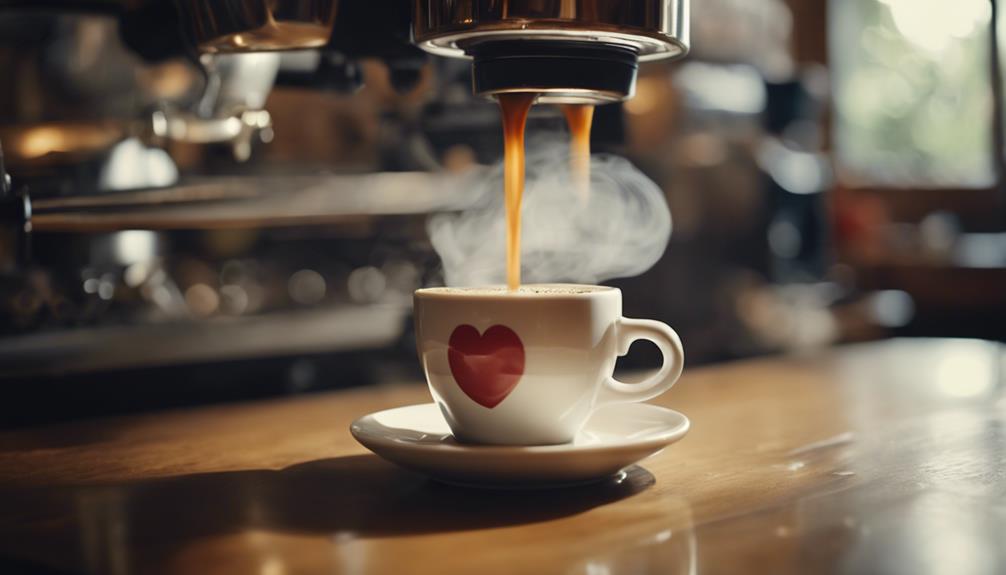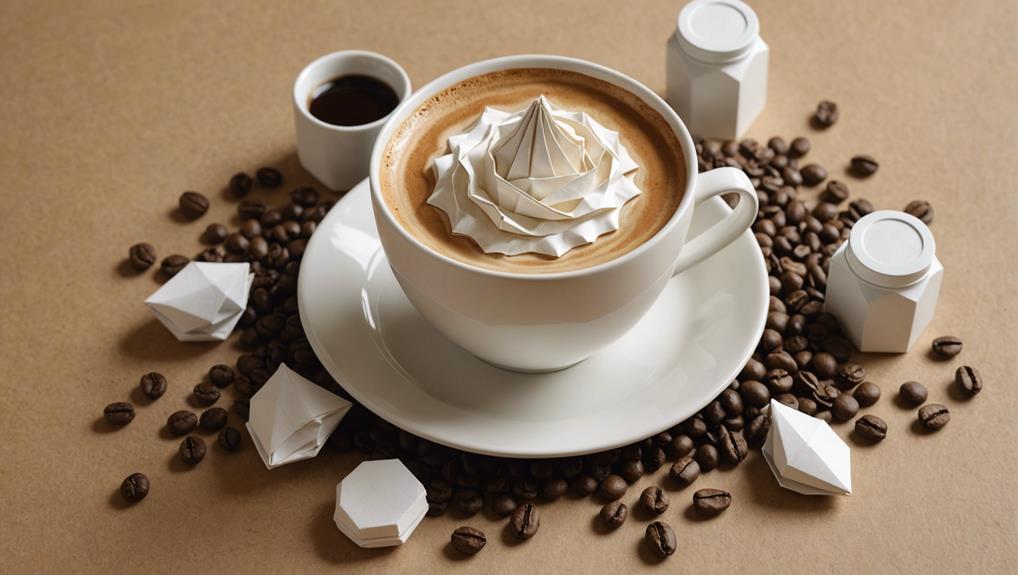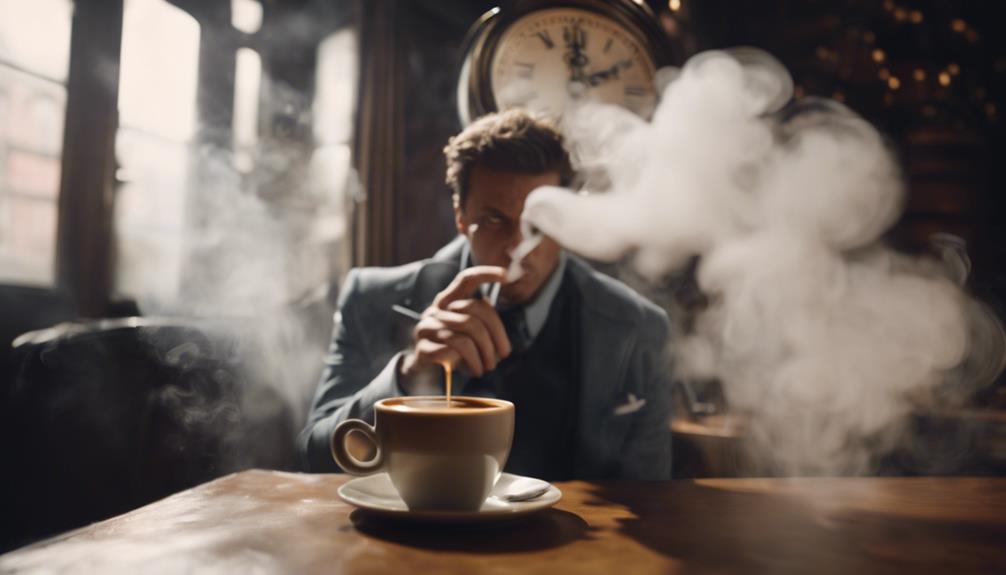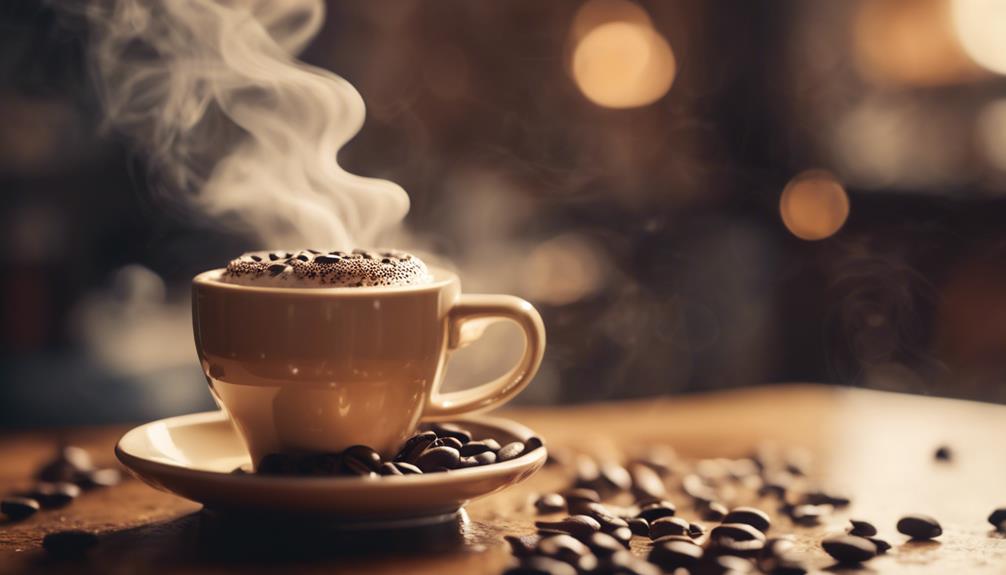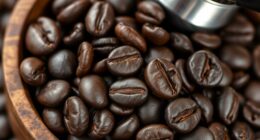Finally, espresso offers significant health benefits to you. It raises good cholesterol levels, reducing the risks of cardiovascular disease. Consuming it can lower the risk of type 2 diabetes, especially with additional cups. Espresso also enhances exercise performance and helps manage calories effectively. The benefits of cancer prevention are noticeable with daily espresso intake and its antioxidants. Ultimately, it aids digestion with anti-inflammatory properties and muscle stimulation. From promoting heart health to potentially preventing cancer, boosting performance to supporting digestion, there is much more to discover about how espresso can positively impact your well-being.
Key Takeaways
- Enhances good cholesterol production with cafestol in espresso.
- Reduces type 2 diabetes risk by 11% with increased espresso intake.
- Boosts workout performance, controls calories, and aids in calorie management.
- Offers cancer prevention benefits with antioxidants and caffeine content.
- Supports digestive health by aiding digestion and promoting bowel movements.
Promotes Good Cholesterol Production
Espresso enhances the production of good cholesterol in your body, supporting overall heart health. HDL, known as good cholesterol, plays a vital role in your cardiovascular well-being. When you consume espresso, the presence of cafestol in this potent brew stimulates the synthesis of HDL. This is advantageous because HDL helps transport LDL, the bad cholesterol, away from your blood vessels, reducing the risk of cardiovascular diseases.
The brewing process of espresso is key to its cholesterol-balancing effects. Unlike other brewing methods that extensively filter out cafestol, espresso retains this compound due to minimal filtering. As a result, regular consumption of espresso can aid in maintaining ideal levels of good cholesterol in your body, which is essential for a healthy heart.
Reduces Type 2 Diabetes Risk
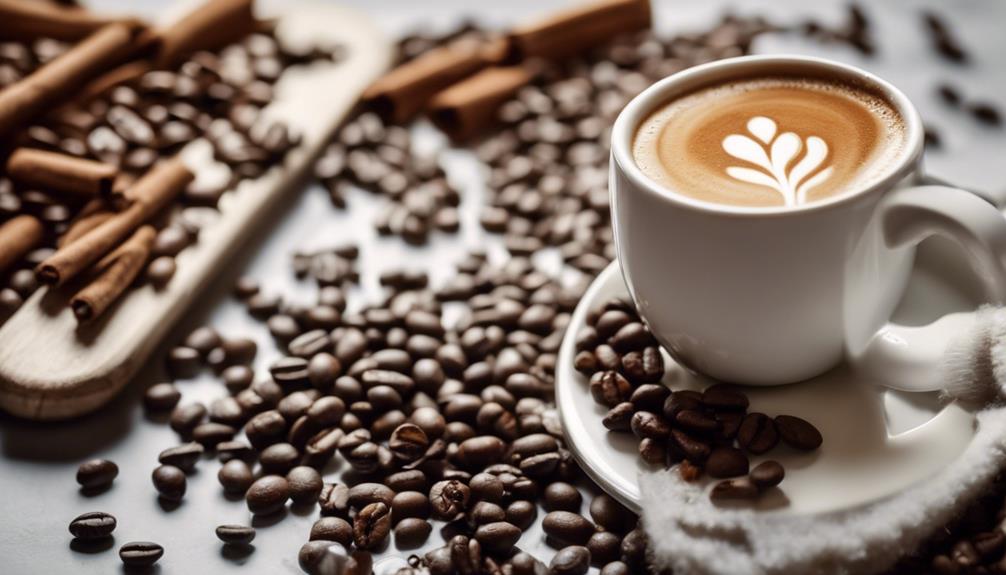
To reduce your risk of developing type 2 diabetes, increasing your coffee intake, particularly espresso, can be a beneficial strategy. Studies have shown that higher coffee consumption is linked to a lower risk of developing type 2 diabetes. Adding just one extra cup of espresso to your daily routine can decrease the risk of type 2 diabetes by as much as 11%.
It's not just espresso that offers these benefits; various types of coffee can help in lowering diabetes risk as well.
For an added health boost in diabetes prevention, consider incorporating soy milk into your espresso. This combination can enhance the health benefits associated with coffee intake.
Taking a proactive step towards lowering your risk of type 2 diabetes by modifying your coffee-drinking habits is a smart move. By making small changes like opting for espresso or adding soy milk, you can actively work towards lowering your risk of developing type 2 diabetes.
Enhances Workout Performance and Controls Calories

For improved workout performance and better calorie control, incorporating espresso into your routine can be highly beneficial. Espresso is a low-calorie option, with only about 3 calories per ounce, making it a great choice to help manage your calorie intake while exercising. Consuming espresso before your workout can boost your energy levels, enhance stamina, and improve physical performance, allowing you to push harder during your fitness regimen. Opting for plain espresso over milk-based drinks can further aid in calorie control, ensuring you get the most out of your exercise session. By including espresso in your pre-workout routine, you can achieve better fitness outcomes and maximize the benefits for your workout performance. Remember to steer clear of high-calorie espresso drinks to fully harness the advantages of espresso for your exercise and overall health.
| Category | Facts | Tips |
|---|---|---|
| Calories | Only 3 calories per ounce | Choose plain espresso for calorie control |
| Workout Performance | Boosts energy levels | Enhances stamina and physical performance |
| Calorie Control | Helps manage calorie intake | Avoid high-calorie espresso drinks |
Offers Cancer Prevention Benefits

Drinking three or more espressos daily can lower your risk of prostate cancer. The antioxidants found in espresso play an important role in cancer prevention by combating free radicals that can lead to cancer development.
Espresso's high-pressure extraction method guarantees that essential nutrients beneficial for preventing cancer are preserved. Additionally, the caffeine in espresso may potentially enhance blood flow and improve tumor oxygenation, further contributing to its cancer prevention benefits.
However, it's important to note that individuals already diagnosed with cancer should be cautious about their caffeine intake while enjoying espresso, as monitoring caffeine levels is essential in such cases.
Supports Digestive Health
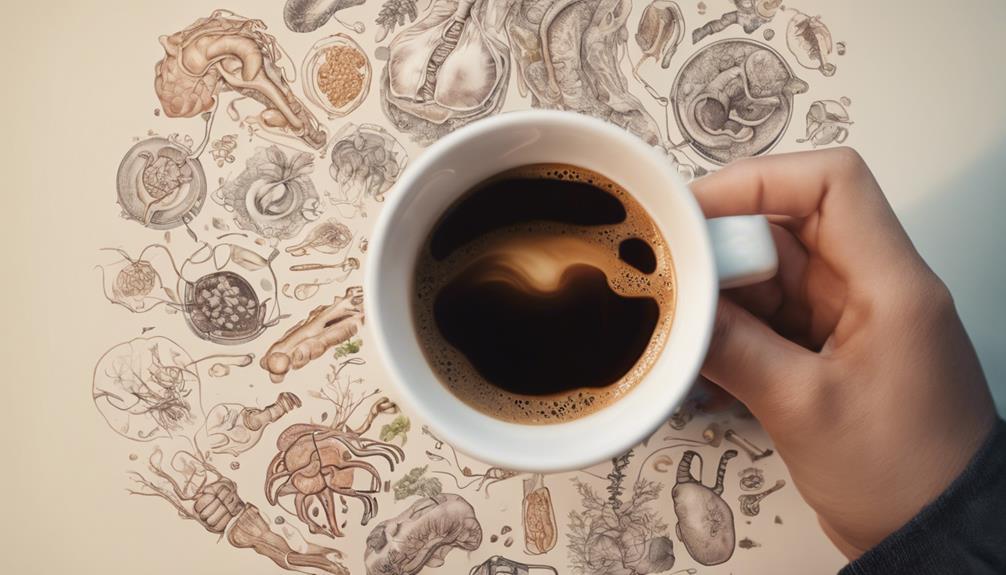
Espresso's benefits extend beyond cancer prevention, as it also supports digestive health through its anti-inflammatory properties and ability to aid in digestion. When it comes to your digestive well-being, espresso can play a significant role. Here's how espresso can help your digestive cycle:
- Anti-inflammatory Qualities: Espresso acts as an anti-inflammatory agent, aiding in digestion and preventing bloating.
- Improved Digestive Comfort: By promoting healthy bowel movements and easing stool passage, espresso enhances digestive comfort.
- Stimulates Bowel Muscles: The caffeine in espresso stimulates bowel muscles, supporting a healthy digestive system.
Espresso aids in digestion and can be enjoyed after meals to help your digestive system function efficiently. Whether it's preventing bloating, ensuring healthy bowel movements, or easing stool passage, incorporating espresso into your routine can contribute to improved digestive health.
Frequently Asked Questions
What's so Good About Espresso?
Espresso offers a range of benefits that make it a popular choice for many. Its rich antioxidants, like polyphenols and cafestol, can help prevent diseases.
Boosting memory and cognitive functions, espresso enhances mental performance. With increased adrenaline levels, it also aids in physical strength and speed.
Low in calories, it supports weight management. Additionally, espresso consumption can lower the risk of stroke and type 2 diabetes, promoting overall health.
Is a Shot of Espresso a Day Healthy?
Having a shot of espresso daily can be healthy for you. It boosts memory, reduces stroke risk, aids in weight management, and helps maintain healthy cholesterol levels.
Plus, it can improve physical performance and focus. So, incorporating a shot of espresso into your routine can offer various health benefits.
Just remember moderation is key to reaping the advantages without overdoing it.
What Does Espresso Do to the Brain?
Espresso stimulates your brain by jumpstarting dopamine production, enhancing concentration, and memory.
The caffeine present acts as a cognitive booster, increasing attentiveness and task memory.
Before exams, espresso can improve memory retention and cognitive functions.
Dopamine release from espresso contributes to better brain performance, leading to increased productivity and improved cognitive function.
Why Does Espresso Make Me Feel Better?
Espresso makes you feel better because it boosts dopamine levels in your brain, enhancing mood and happiness. The caffeine in espresso also plays a role in stimulating a positive mood and can help alleviate symptoms of depression.
These combined effects can lead to an overall improvement in mental well-being. Additionally, the quick peak of caffeine from espresso within an hour provides a rapid mood lift, contributing to improved concentration, focus, and productivity.
How Does Using Glass Espresso Cups Impact the Health Benefits of Espresso?
When it comes to enjoying a cup of espresso, the type of cup you use can impact the health benefits of the drink. Glass espresso cups benefits explored show that using glass cups can preserve the flavor and temperature of the espresso without leaching any harmful chemicals, ultimately enhancing the overall experience.
What Are the Health Benefits of Drinking Espresso?
Espresso health benefits explained: Drinking espresso in moderation can offer several health benefits. Its high concentration of antioxidants may help reduce the risk of certain diseases. Additionally, the caffeine in espresso can improve mental alertness and boost physical performance. However, it’s important to avoid excessive consumption to avoid negative side effects.
Conclusion
So go ahead and enjoy that espresso guilt-free! With all its health benefits, it's practically a superfood in a cup. Just remember, moderation is key – don't go overboard and turn into a jittery espresso addict.
But a daily dose of this delicious brew can actually do wonders for your health. Who knew that something so tasty could be so good for you?
